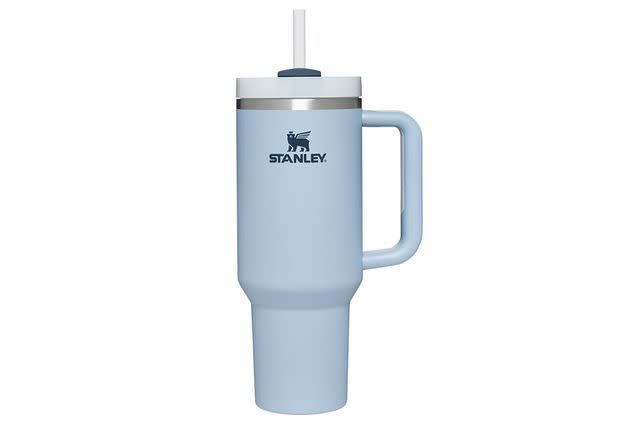Stanley Responds to Claims That Their Cups Contain Lead
A representative for the brand pointed PEOPLE to their FAQs which say that the vacuum insulation technology requires a component that contains lead but is "inaccessible to consumers”

FREDERIC J. BROWN/AFP via Getty
Stanley CupsStanley customers have recently been making videos testing their cups for lead
A representative for the brand pointed PEOPLE to their FAQs, which say that they do use lead, but it is in a place that is "inaccessible to consumers"
The spokesperson told Today.com that the lead would only become exposed if the tumbler gets damaged
Customers are asking questions about Stanley's cups.
TikTok users have created videos claiming that the popular tumblers contain lead, which could pose a risk for lead poisoning. One user, who goes by @_bexaromm, even tested her Stanley to see if it contained lead, but she said it "fortunately" did not.
A representative for the brand pointed PEOPLE to their FAQs, which say that the vacuum insulation technology requires a component that contains lead — but is "inaccessible to consumers."
“Our manufacturing process currently employs the use of an industry standard pellet to seal the vacuum insulation at the base of our products; the sealing material includes some lead,” Stanley’s website reads. “Once sealed, this area is covered with a durable stainless steel layer, making it inaccessible to consumers.”
The brand also directly responded to the claims. In a statement to Today.com, a representative said the lead would only become exposed if the tumbler gets damaged. The representative explained to the outlet that it’s possible, but “rare.”

Related: There Might Be Mold Hiding in Your Stanley Cup — Here's How to Clean It
Per the company’s website, “in the rare occurrence the base cap of a product comes off due to ordinary use and exposes this seal,” it’s eligible for lifetime warranty.
“Our engineering and supply chain teams are making progress on innovative, alternative materials for use in the sealing process,” the spokesperson told Today.com.
Stanley Cups have seen several viral moments in recent months. Most recently, TikTok creators have gone viral for sharing the hidden mold in their Stanley cups, be it in the lid or in the actual body of the tumbler.
Skylar Ray Rose (@skysayingthings) discovered pesky mold in her tumbler’s lid in October — and went viral for a post that got nearly 1 million likes. As she squeezed the small compartment lid, specks of black peppered the top. “I literally have mold,” she screamed. “This is so gross.”
Another creator, Nicole Kramer (@nicokekramer_), revealed mold in the body of her cup. “Never underestimate how often you need to clean your Stanley cup,” she said at the start of the TikTok video, which showcased spores inside the vessel. “I’ve had the worst sore throat. No idea why. Look inside my cup this morning…you don’t even want to see the straw."
Luckily, it’s not hard to keep your own Stanley Cup from becoming dirty. Kyle Casteel, Senior Hydration Product Manager at Stanley, shared expert tips with PEOPLE on how to properly wash your beloved tumbler. For starters, Casteel says you shouldn’t put off cleaning it.
“Ideally, your Stanley Quencher or other favorite Stanley should be washed after each use. Keep your Stanley clean both inside and out for sanitary sipping!” he said.
Related: Target Shoppers Are 'Getting Trampled' for a Limited Edition Valentine's Day Stanley Cup
According to the brand expert, the easiest way to clean your Stanley is by putting it in the dishwasher. While most of the company’s products, including the popular Quencher, are dishwasher safe, check the bottom to make sure it is, he added.
If you prefer to wash it by hand, Casteel provides quick and gentle techniques.
“You can also hand wash your Stanley with warm water and mild detergent, and dry with a clean towel or let your product air dry,” he said. “If your product needs a deeper clean, use a mixture of one-part baking soda and one-part warm water, and soak for up to an hour. Then clean with mild detergent once the solution is rinsed out.”
And since all Stanley products are made from stainless steel, Casteel recommends using non-abrasive cleaners and sponges.
For more People news, make sure to sign up for our newsletter!
Read the original article on People.


